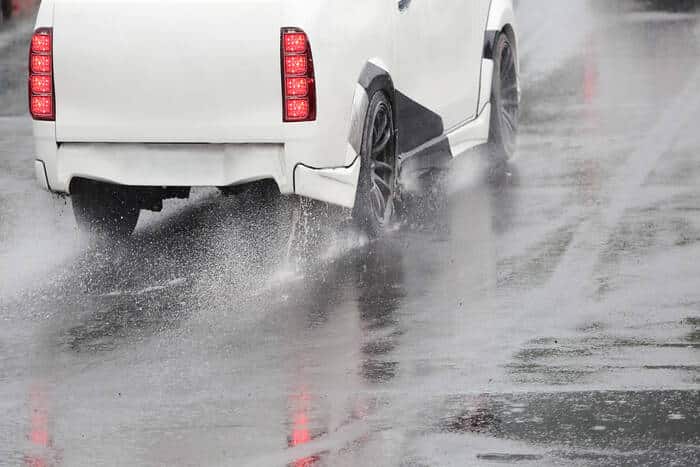Why Are Stopping And Following Distances Important?

Understanding Total Stopping Distance
An important concept for new learner drivers is the idea of “total stopping distance.” This consists of a few different things:
- Your reaction time to a situation on the road
- The time it takes you to hit the brake pedal with your foot and begin braking
- The time it takes for your braking system to respond and slow down to a complete stop
For about 90% of the population, it takes about 2.5 seconds to respond to the situation and hit the brakes – and th
at means that by the time your car is actually braking, you may have already hit the person in front of you if you only were maintaining a 1-2 second gap.
But if you’ve increased your following distance from just 1-2 seconds to 3-4 seconds, you have that much more time to stop safely – your reaction time doesn’t have to be as fast, you can react properly, and you can avoid rear-end collisions.
How To Measure Following Distance – The Simplest Method
The best way to determine how closely you’re following a car is to pick an object on the side of the road next to the car in front of you, such as a power pole. Then, start counting “one one thousand, two one thousand, three one thousand” and so on.
Each “one thousand” represents one second. Once you pass the stationary object, you’ll know how closely you’re following the car in front of you, and you can adjust accordingly.
Following Distance Isn’t Set In Stone – Consider Weather Conditions, Traffic & More
Obviously, it may not always be possible to maintain 3+ seconds of following distance in heavy traffic. But you can still continue maintaining a safe following distance and stay alert, even in a traffic jam.
Driving conditions like poor visibility and rain also affect braking distance. It may be harder to see cars in front of you, and your braking system may take longer to operate if it’s slick or wet, so you may want to increase your following distance to 4-6 seconds or more, in these cases.
Learn More About Safe Driving & Defensive Driving From LTrent Driving School
Proper following distances are a key concept in safe driving. If you’re a learner driver and you’re interested in learning more about defensive driving techniques and staying safe on the road, LTrent Driving School is here to help. Contact us online or to schedule your driving lessons in VIC or NSW now, and get the help you need to become a safer driver.
Ltrent Driving School provides lessons for drivers of all levels. For NSW learner drivers, take advantage of the safer drivers course, which not only accounts for 20 of your logbook hours but will also teach you invaluable driving practices that will keep you safe for life.